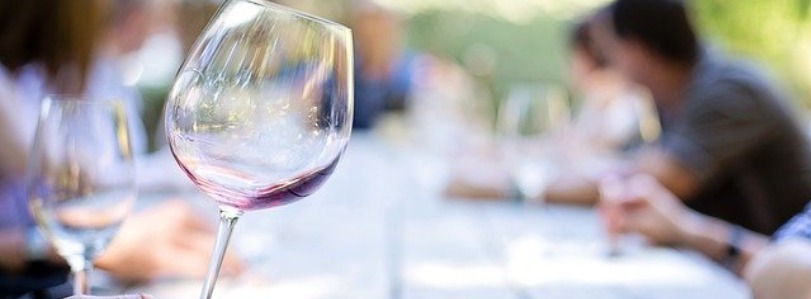I bet when you think of Florida you envision palm trees swaying in the breeze, white sandy beaches, lots of sunshine, and miles and miles of orange groves! Well, you’d be conjuring up the right picture but did you know that Florida is also home to quite a few wineries? Yes, you’re reading it right. The Sunshine State is into grapes!
Not only do we have wineries harvesting muscadines and carambolas and creating merlots and sparkling vintages, but we also have one that specializes in citrus and berry flavors. How about a glass of mango or key lime to get your taste buds tingling?
Now, wine-making and grapes is news to me because I had no idea the wine industry was flourishing in my part of the world but evidently, from what I’ve read, wine has been made in Florida since before the Pilgrims landed! One note I read said the first wine that was made in Florida was done by the French Huguenots in 1562. That’s going back a ways!
There are 10 working wineries in the state and each has become a tourist attraction by providing tours to experience the wine-making process, wine tasting so you can expand your horizons and to try something new, and providing retail shops so you can purchase your favorite wine.
Here’s a little information just to pique your interest.
At an international wine competition a few years ago, the Florida Orange Groves, Inc, and Winery received a gold medal for its tangerine wine. The Florida Orange Groves, Inc and Winery do not use grapes in its process. Its products are made strictly from citrus, berries, and different types of fruit. If you enjoy the flavor of citrus, you’ll enjoy what they have to offer.
Wine competitions are important venues for any business and for the wine business, they have established Florida as a source for fine wines.
Check out the San Sebastian Winery in St. Augustine, which also competed in the competition and came away with the silver medal for its “sherry-style” muscadine wine.
Eden Vineyards and Winery of Alva, located near Ft. Myers, has the dual distinction of being the southernmost winery in the U.S. and being Florida’s oldest operating winery. It was also a winner at the competition with its tropical carambola wine and received the bronze medal for its accomplishments.
Located in the panhandle region, we have the Chautauqua Winery where you’ll find the largest vineyard in Florida. They have won both national and international competitions with their muscadine wines.
You’ll find wineries located on the east coast, west coast, and panhandle. Have a look at this directory of wineries located throughout the state to find the ones that will be the most convenient.
It would certainly make a nice day trip to visit any one of these vineyards, just be sure not to sample too much and drive.
I hope you’ve enjoyed this article and if you’ve visited any of these locations, please drop me a line. I’d like to share your experience with our readers.
Florida Wine Overview
Florida has a very rich agricultural history, readily evident by much of the citrus fruit you’ll find in your local grocery store. Citrus fruit-growing is a major part of the state’s economy, but what about grapes?
This far south, the most common grape that does well is the Muscadine grape, which still grows in the wild in many parts of Florida. But there are parts of Florida, particularly in the north-central portion, that are heavily forested, hilly and rural. Not far from Tallahassee, there are a few vineyards tucked away that yield not only Muscadines but many other hybrid grapes for wine-making.
One hybrid grape that does well in north central Florida vineyards is the Conquistador grape, which is used to make semi-dry red wines for a couple of Florida wineries. Three Oaks Winery, in Vernon, uses the Conquistador grape for many of their offerings, including a rich port wine.
One Florida winery, Schnebley’s Redlands Winery, uses only tropical fruit to craft their wines. They’re the southernmost winery in the U.S., and if you stop in you can sample their wines made from guava, carambola, passion fruit and more. And then there’s the renowned San Sebastian Winery in historic St. Augustine, which consistently brings home medals from respected national wine competitions for their table wines.
All in all, there aren’t a whole lot of wineries in Florida, given the state’s size. There are close to 20, and most are farm wineries that also produce other products such as citrus or dairy. You’ll find five wineries in Florida’s Panhandle region, which you can learn more about by reading our travelogue.
The rest of the wineries are scattered across the state, with the majority on the Gulf side and a bit inland. Just about every Florida winery offers their take on a traditional southern favorite, Muscadine wine, but there are plenty of offerings for those who prefer something less sweet. At the wineries in the northern Florida Panhandle, it’s quite interesting to sample wines made with grapes grown in Florida other than Muscadine. Florida winemakers are doing some interesting things and although the Florida wine industry will likely never have a high profile, it’s certainly worth experiencing. We enjoyed one of our most enjoyable trips in Florida’s Panhandle and were able to visit most of the wineries in the region. Further, the cities of Pensacola and Tallahassee are wonderful places to visit!
Florida Wine Trails
There are no defined wine trails in Florida, but there really should be. The five wineries in the area between Pensacola and Tallahassee represent a few hours drive, encompassing everything from beaches to heavily forested sections along the way.
If you’ve ever driven through Florida, you know it can take a substantial amount of time to get from place to place, particularly during the busy seasons. We really didn’t experience any traffic problems in northern Florida, but then again we visited during the off-season.
